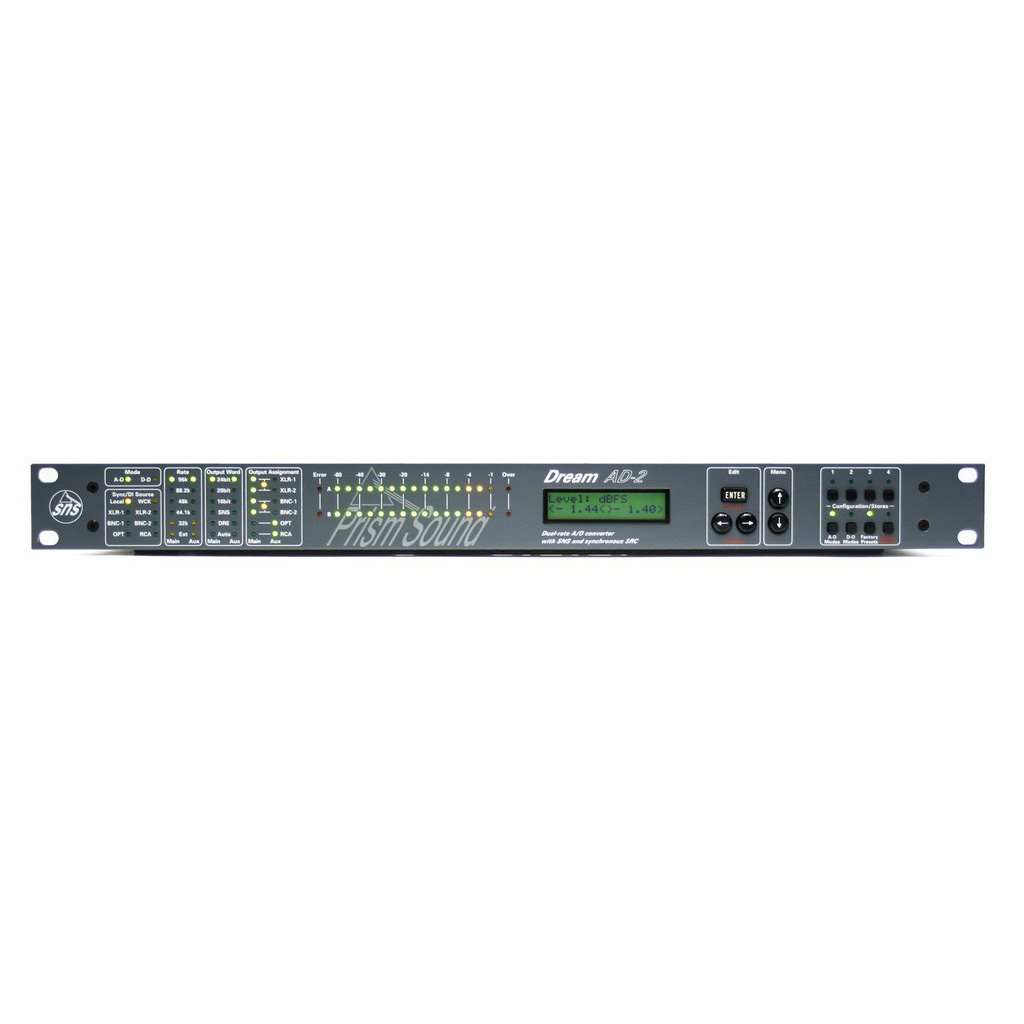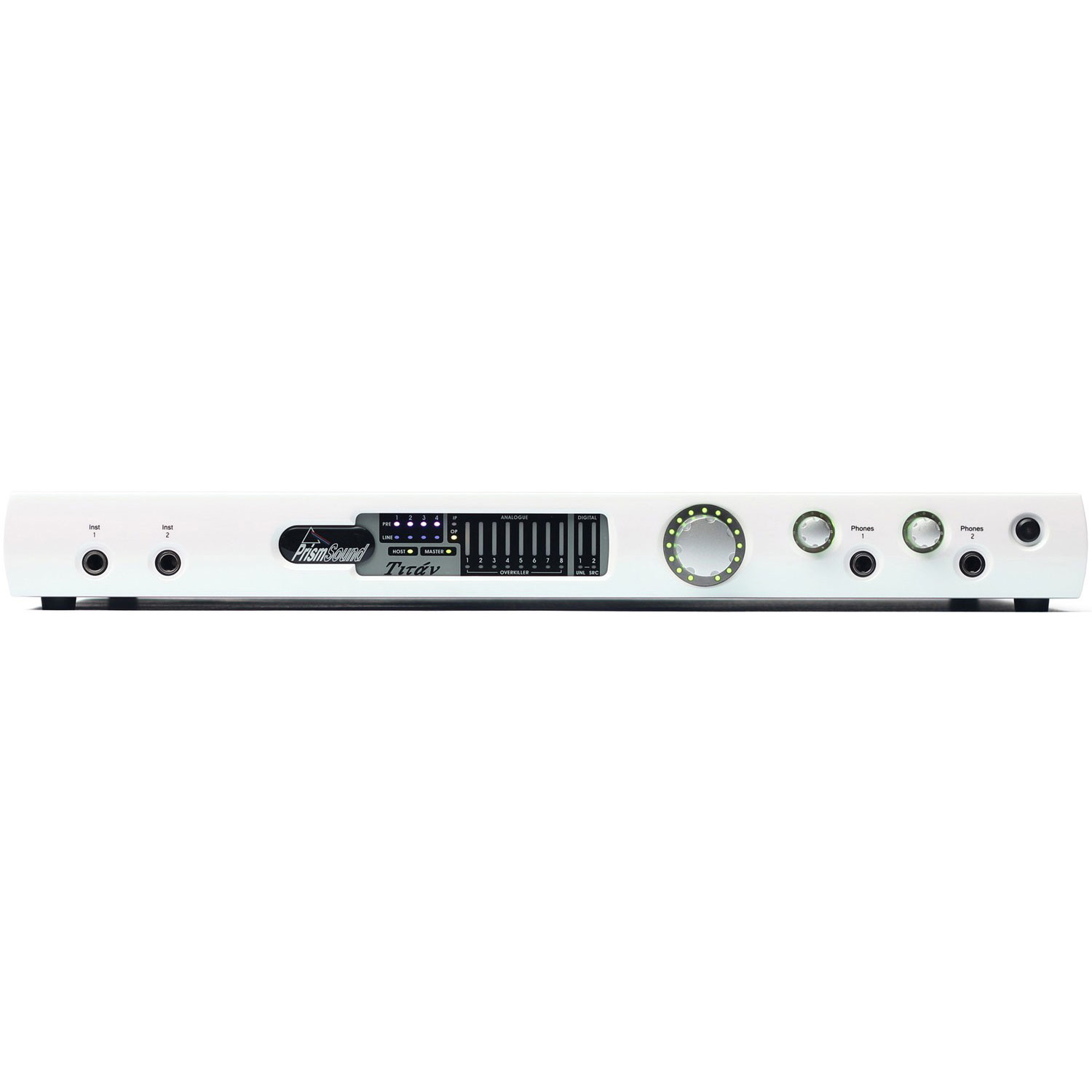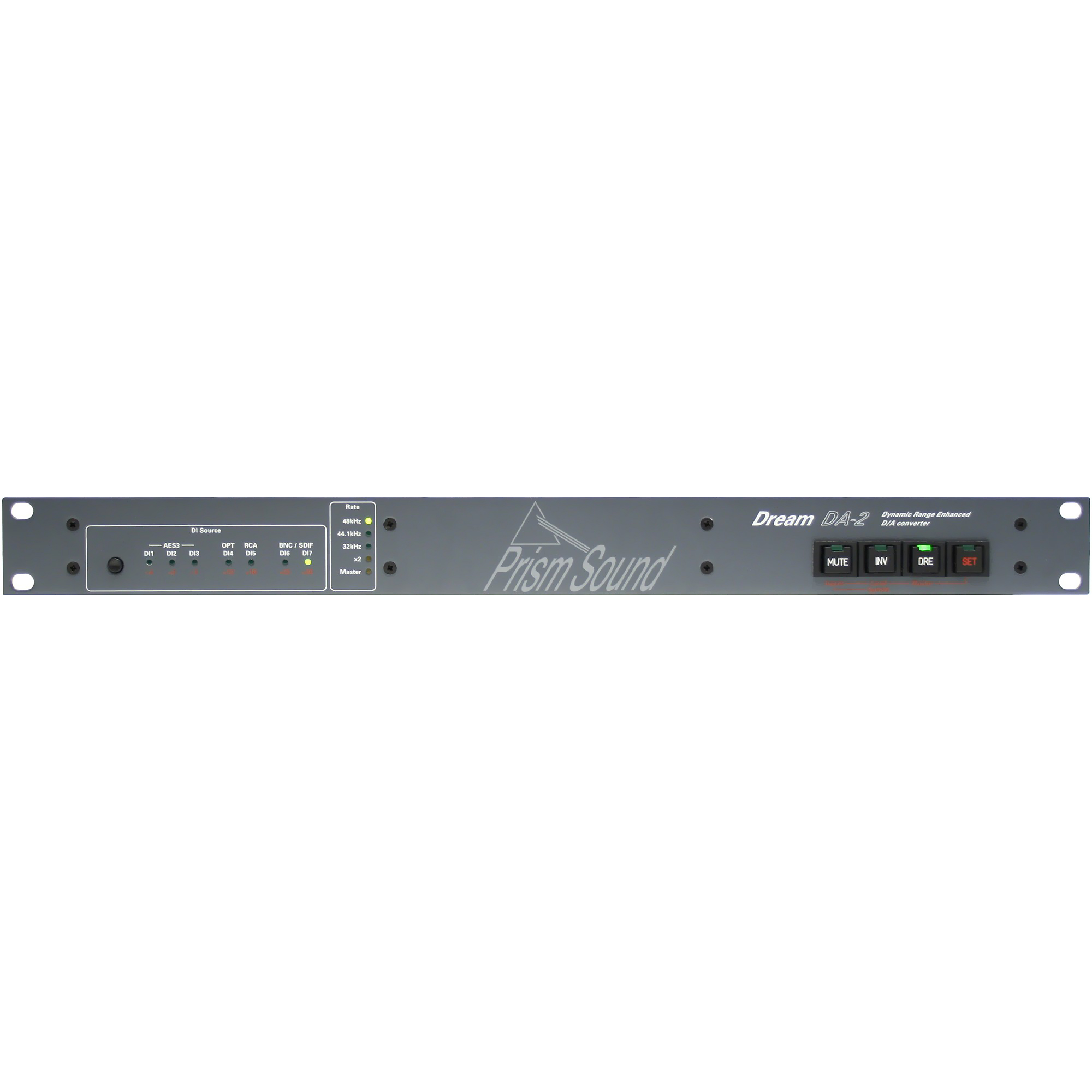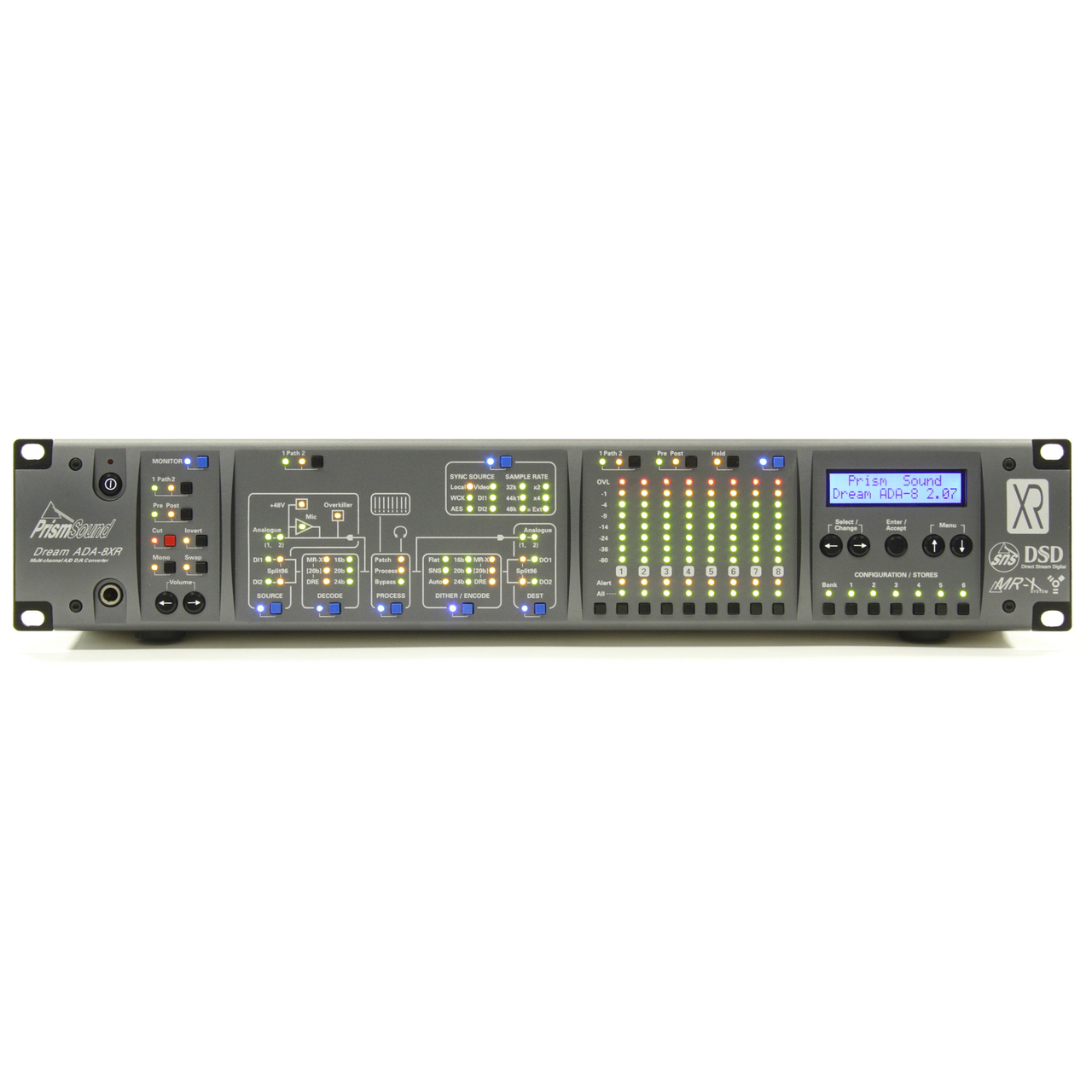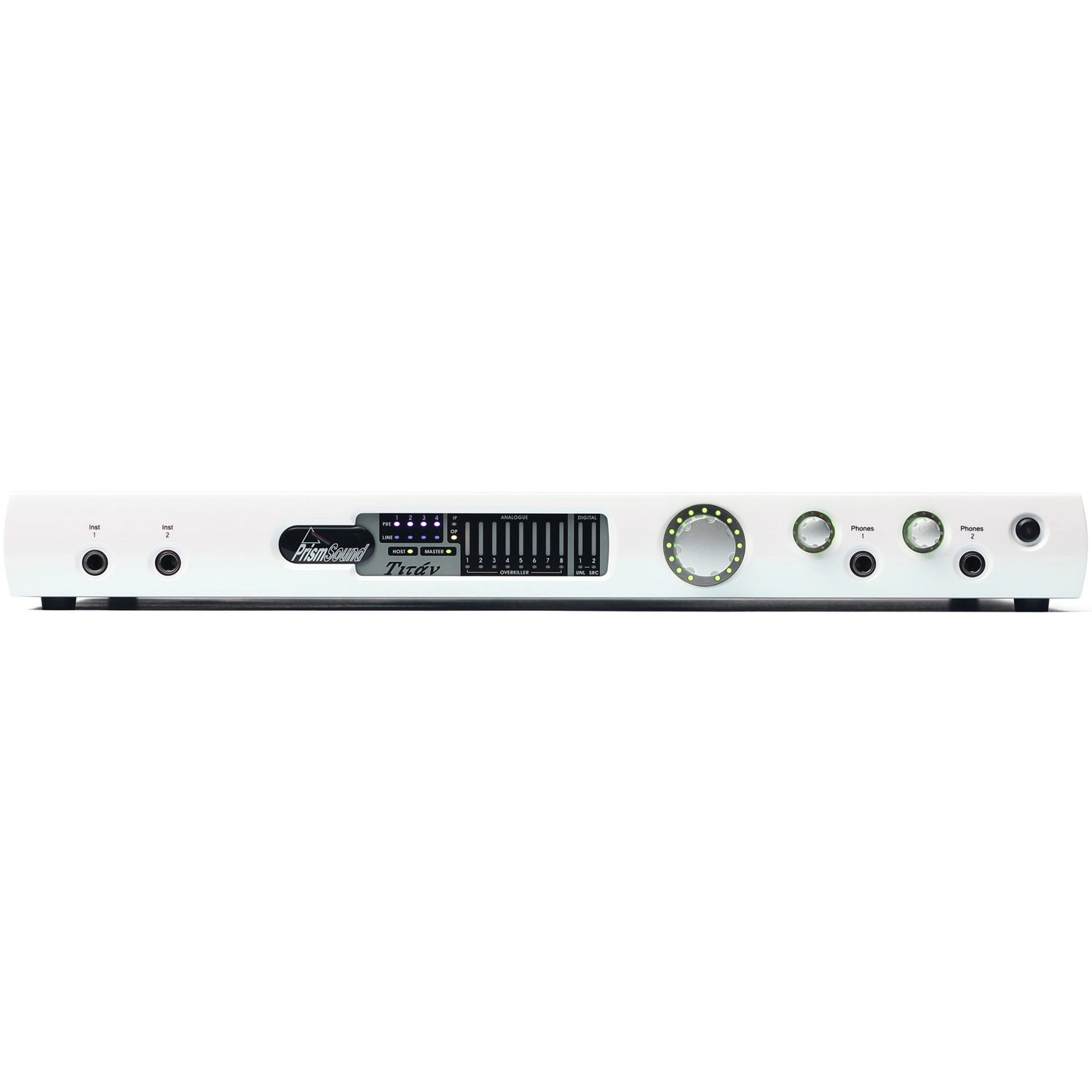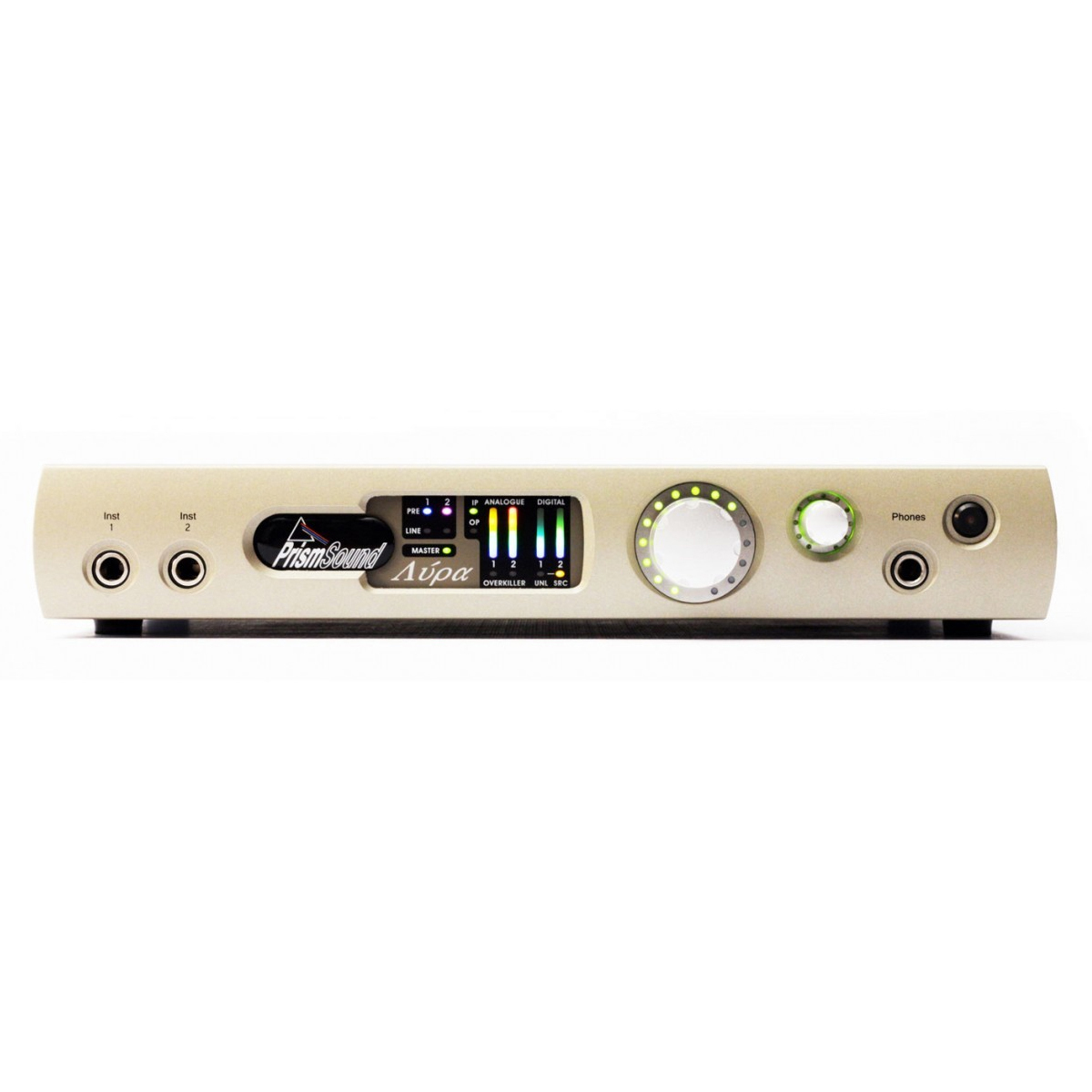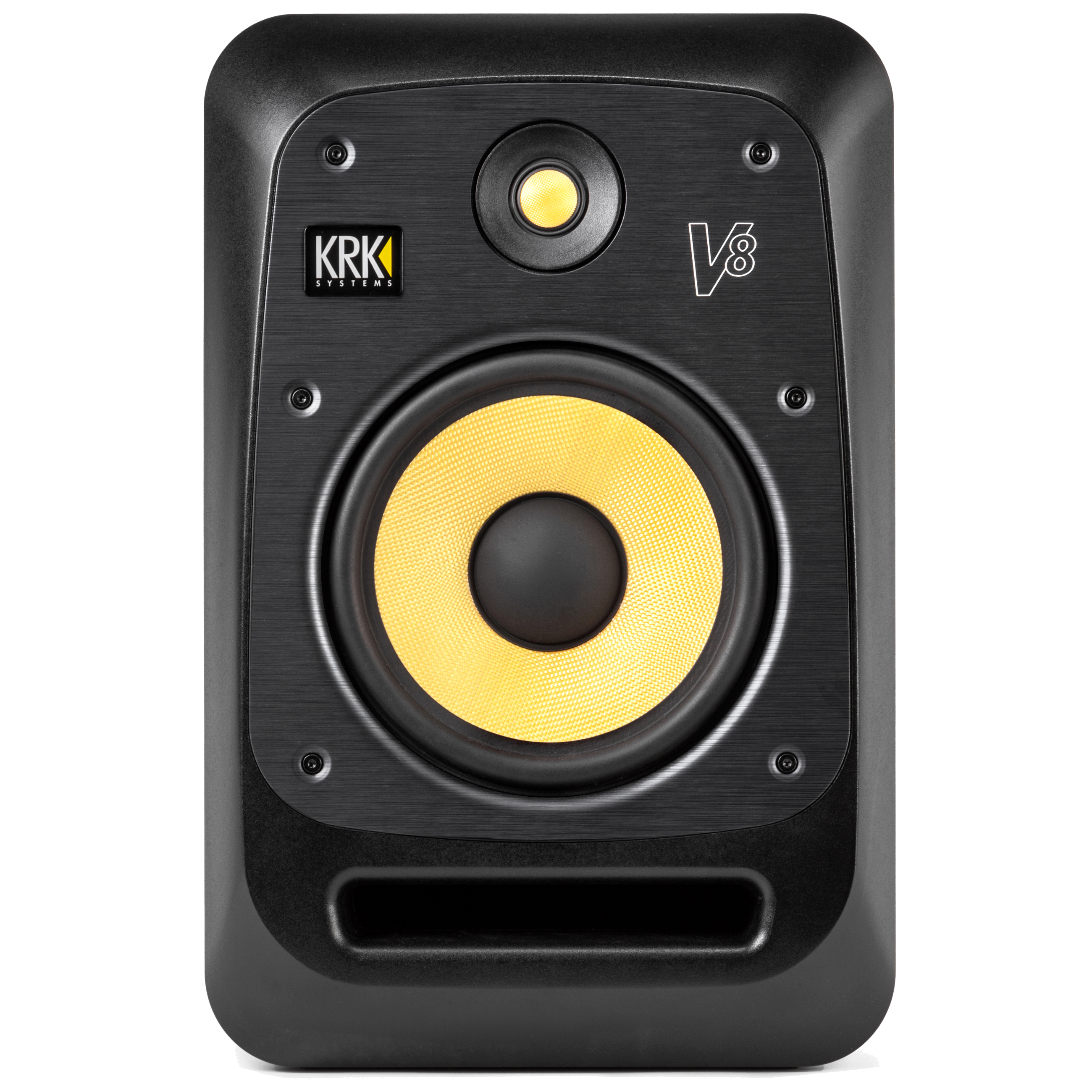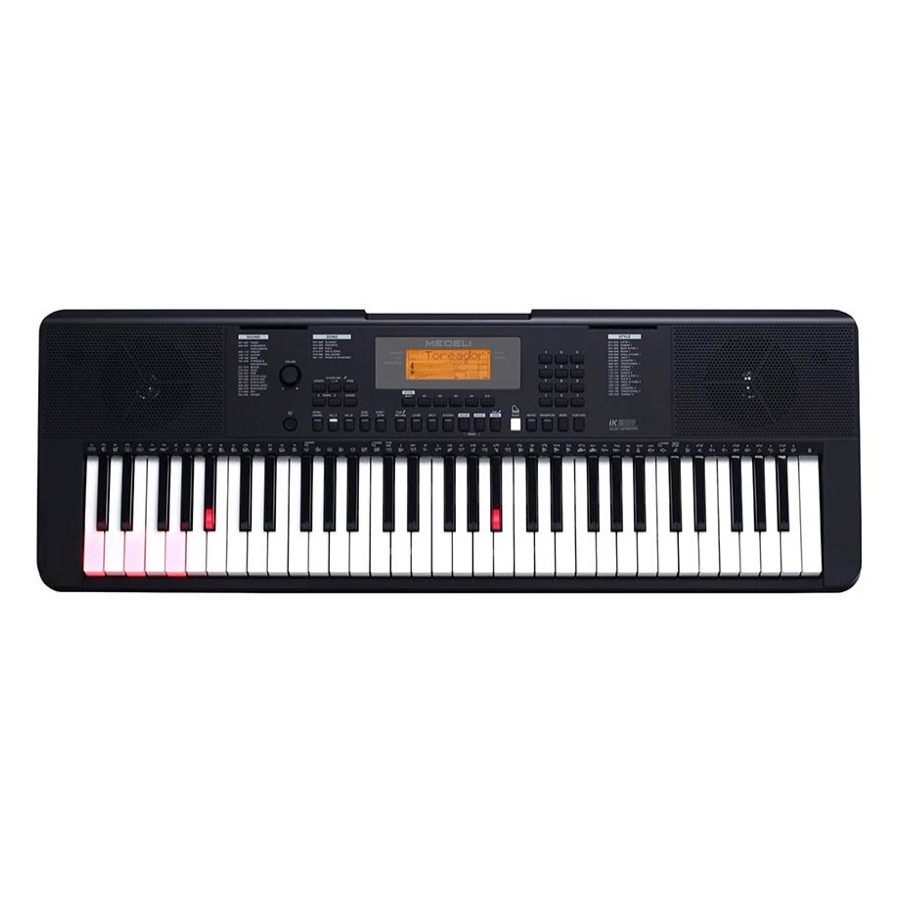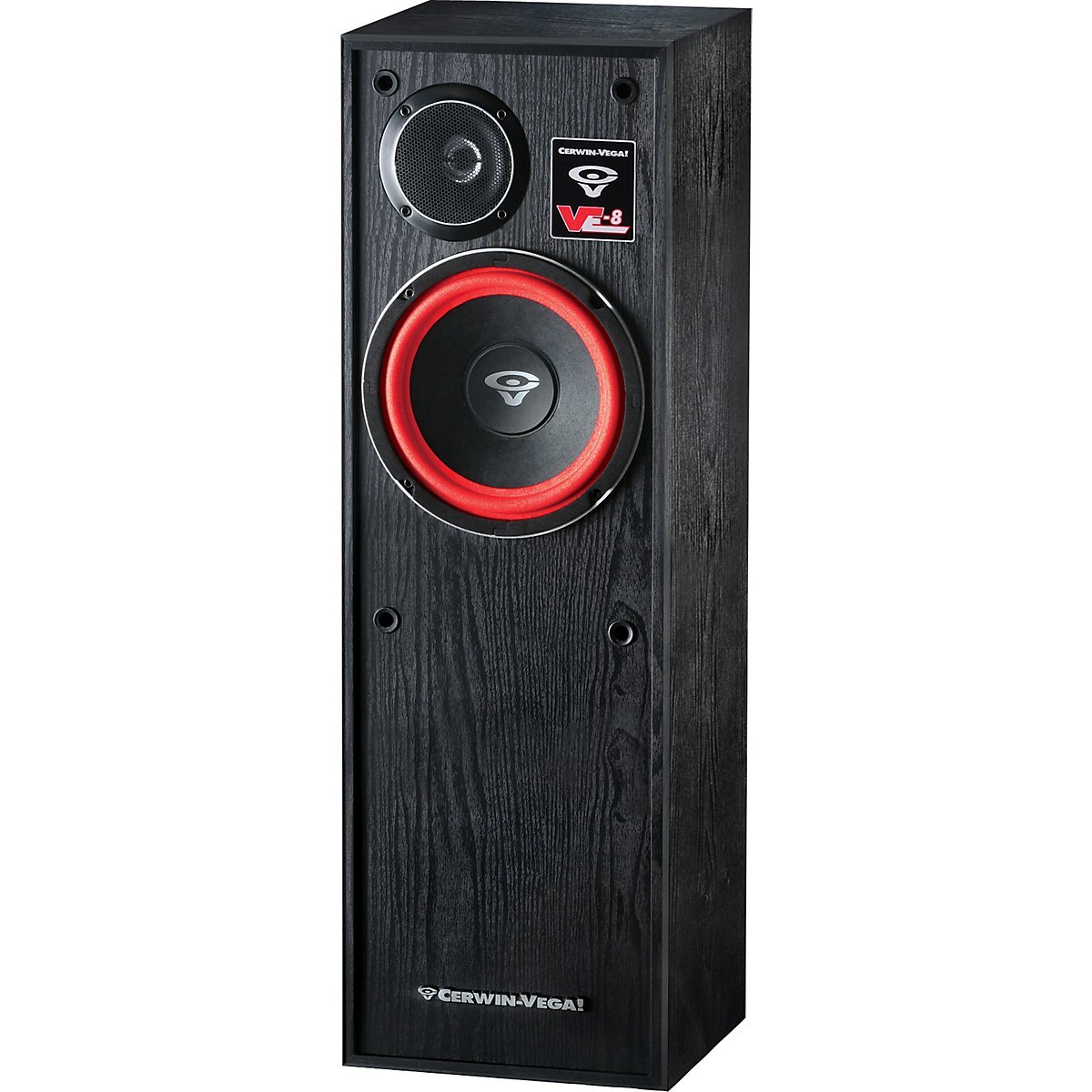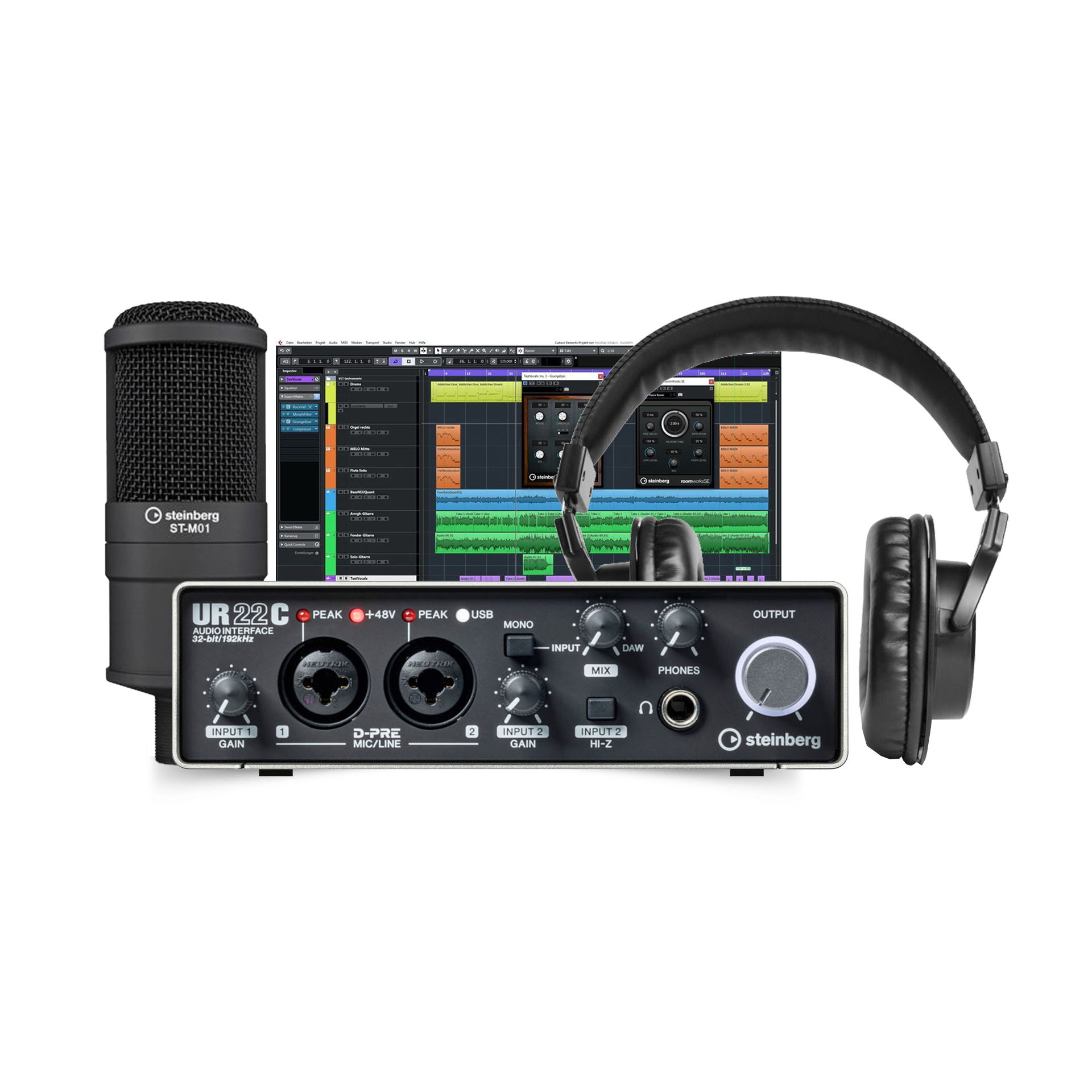Prism Atlas USB Recording Interface
Atlas is ideal for music and sound recording, mixing, multitracking, overdubbing, stem-based mastering, analogue summing and critical listening applications.
Signal path
Atlas provides Prism Sound's renowned performance, sound quality and state-of-the-art clock technology in a dedicated unit compatible with both Windows (Vista, 7 and 8, 32 and 64 bit, ASIO as well as MAC OS X 10.4.11 and later (Intel). Once configured with a computer, Atlas can also operate stand-alone using its ADAT, S/PDIF or AES3 I/O.
Eight analogue input channels and up to 10 digital input channels are available as inputs for your audio workstation software through the host computer's audio driver. Similarly, eight analogue output channels, up to 10 digital output channels and stereo headphone outputs can play 20 different channels. For low-latency foldback or monitoring to headphones or main outputs, each output pair (1-2, 3-4 etc or the headphone output) can optionally be driven from the built-in DSP mixer with an individual local mix of any selection of inputs through the controller applet. All analogue inputs are electronically balanced with automatic unbalanced operation. Analogue outputs are electronically balanced with 'bootstrapping', i.e. level is maintained if one leg is grounded.
Multichannel Digital Input and Output (MDIO) expansion
As well as the built-in inputs and outputs Atlas can accommodate other optional digital interfaces such as Pro Tools | HDX and AES3 multichannel options through its MDIO expansion slot. This flexibility makes Atlas perfectly suitable for the home, native or project studio as well as larger multitracking facilities by seamless, reliable integration with the industry standard platforms. The MDIO expansion means Atlas is future-proof allowing further digital interface options to be developed and available such as Thunderbolt (to be confirmed).
No-compromise, full Prism Sound audio quality
Atlas makes no compromises on audio quality. It is the result of years of research and development into digital audio conversion and extensive dialogue with Prism Sound's customers.
Atlas draws on Prism Sound's years of experience in developing digital audio products, including its range of audio test equipment, adopted by a wide variety of clients across the audio industry from pro-audio to consumer electronics. This experience means that Atlas is well-behaved both as a computer peripheral and an audio processor.
Reliability is vitally important in professional recording. Prism Sound has always made extensive use of precise software calibration techniques in its converters - pots and tweaks are always unreliable, so there are none.
The design team has gone to great lengths to minimise noise and interference, in particular hum. All of the analogue circuits have galvanic isolation, while the unit's electronically balanced I/O allows it to handle common mode interference sources as well as enabling trouble-free connection to unbalanced equipment.
It is often said that THD+N figures do not always correlate well with the perception of sound quality and this is true - partly because the traditional measures of THD+N or SINAD expressed as RMS figures are rather a broad measure. With this in mind, we have taken great care to make sure that not only is the Atlas noise and distortion spectrum beyond reproach, but the RMS distortion result measures up to the state of the art.
Standards compliant USB interface
Prism Sound has taken on board the increasing importance of native processing power for professional users and the fact that software products for standard PC and Mac platforms have been greatly enhanced in recent years. Atlas uses a USB2 interface. This is a UAC2 (USB Audio Class 2) interface supported natively in Mac, iPad, Linux and Android, and in Windows via a driver.
Atlas is easy to connect to your computer and to your outboard gear. For both Mac and PC platforms, there is a controller application to configure the unit and control its built-in mixer and other functions. Aside from the monitor and headphone level controls, everything else is operated solely from the Atlas controller application. The controller software opens on-screen as a separate panel alongside your existing editing software.
Flexible Inputs and Outputs
Our customers told us that many professional users wanted a highly integrated solution with instrument and microphone inputs, and line outputs that could be used for stereo or multi-channel monitoring and/or foldback to performers. Atlas offers eight analogue recording channels, eight monitoring outputs, stereo digital input and output on a phono connector plus concurrent optical digital I/O ports that can interface to S/PDIF or ADAT data formats, giving Atlas a maximum capability of 18 concurrent input and output channels plus stereo headphones.
Atlas's eight analogue inputs support various capabilities. Atlas has eight high-grade microphone pre-amps with software-controlled gain in 1dB steps, individually-switchable phantom power, 20dB pads - and very low noise and distortion. These combo connector inputs support both microphone and line input, with digitally-controlled mic gain in excess of 60dB. Two front panel inputs also support direct injection (DI) instrument connections with quarter-inch jacks. RIAA Equalization can be selected in the controller applet on channels 1 & 2 so that turntables can be connected for archiving or sampling applications. By selecting the input type (Mic or DI) , low- or high-impedance cartridges can be loaded with suitable termination impedances. All analogue inputs have individually-selectable Prism Sound "Overkillers" built in, just as on the higher-priced ADA-8XR, to catch those fast transients. The Overkiller threshold automatically follows the operating line-up level selection (+4dBu or -10dBV). Overkillers are ideal for percussive sounds, particularly drums, where headroom can be a problem.
The co-axial digital I/O port can be switched in the Atlas controller applet between S/PDIF and AES3 formats. This control changes the operating voltage and the Channel Status format and is complemented by two in-line adaptor leads that provide external XLR connections for AES3 devices. Other connections include wordclock sync I/O.
Atlas can also operate in a stand-alone mode using its ADAT or co-axial digital I/O connections. Once set up using the Atlas controller applet, the unit can be disconnected from the host computer and used independently. Atlas will retain its settings when powered down so even if it is switched off, Atlas can be re-powered and stand-alone operation can continue with the automatically-stored settings.



